Coins of Mexico - catalog and price guide
Spanish Mexico - Viceroyalty of New Spain (1521-1821)
During the Spanish rule in Mexico, coins were minted in traditional Spanish denominations - escudos and reales (Escudo = 16 reales).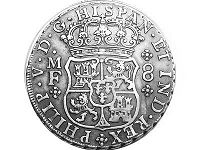 Spanish Mexico
Spanish MexicoPhilipp V (1700-1746)
Ferdinand VI (1746-1759)
Charles III (1760-1788)
Charles IV (1788-1808)
Ferdinand VII (1808-1821)
Mexican coins 1821-1867
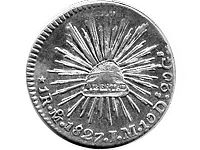 First Republic (1823-1863)
First Republic (1823-1863)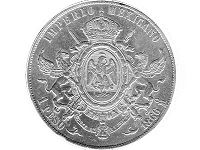 Second Empire (1863-1867)
Second Empire (1863-1867)Mexican coins since 1867
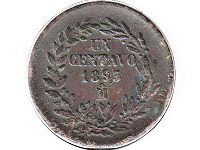 Second Republic (1867-1905)
Second Republic (1867-1905)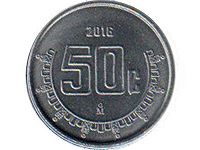 United States of Mexico (since 1905)
United States of Mexico (since 1905)Mexican coins by nominal
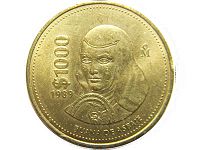 1000, 500,
200 and 100 pesos
1000, 500,
200 and 100 pesos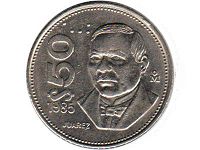 50 pesos
50 pesos25 pesos
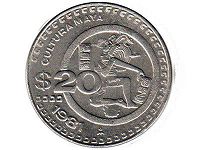 20 pesos
20 pesos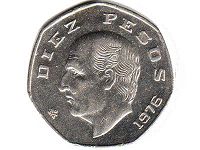 10 pesos
10 pesos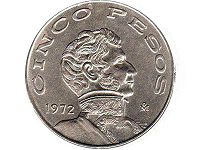 5 pesos
5 pesos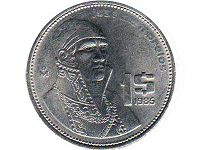 1 peso
1 peso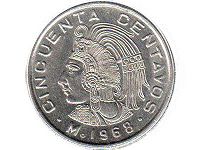 50 centavos
50 centavos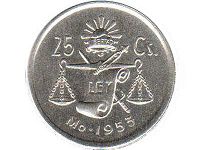 25 centavos
25 centavos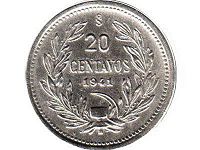 20 centavos
20 centavos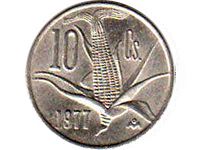 10 centavos
10 centavos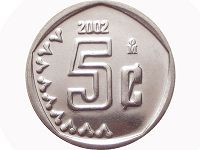 5 centavos
5 centavos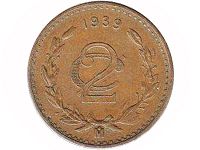 2 centavos
2 centavos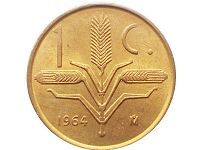 1 centavo
1 centavoCommemorative coins
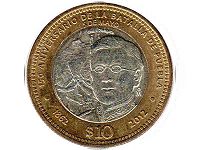 Small series and without series
Small series and without series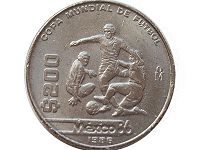 Soccer World Cup 1986
Soccer World Cup 1986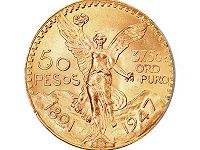 Centenary Family gold coins
Centenary Family gold coins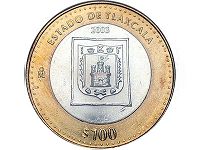 100 pesos - 180th Anniversary of Federation
100 pesos - 180th Anniversary of Federation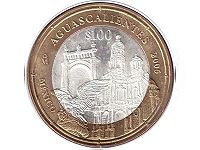 100 pesos - Attractions of the States
100 pesos - Attractions of the States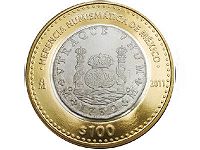 100 pesos - Numismatic heritage of Mexico
100 pesos - Numismatic heritage of Mexico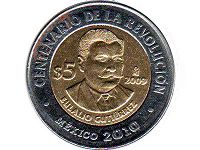 5 pesos - Centenary of the Revolution
5 pesos - Centenary of the Revolution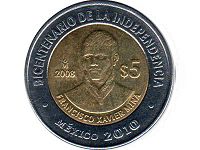 5 pesos - Bicentennial of Independence
5 pesos - Bicentennial of Independence Silver bullion Liberty series
Silver bullion Liberty seriesAll Mexican circulation coins by the types since 1867
- 1 centavo 1869-1897
- 1 centavo 1882-1883
- 1 centavo 1898
- 1 centavo 1899-1905
- 1 centavo 1905-1949
- 1 centavo 1950-1969
- 1 centavo 1970-1973
- 1 peso 1869-1873
- 1 peso 1898-1909
- 1 peso 1910-1914
- 1 peso 1918-1919
- 1 peso 1920-1945
- 1 peso 1947-1949
- 1 peso 1950
- 1 peso 1957-1967
- 1 peso 1970-1983
- 1 peso 1984-1987
- 1 peso 1992-1995
- 1 peso 1997
- 2 centavos 1882-1883
- 2 centavos 1905-1941
- 2 pesos 1992-1995
- 2 pesos 1997
- 5 centavos 1869-1897
- 5 centavos 1882-1883
- 5 centavos 1898-1904
- 5 centavos 1905-1914
- 5 centavos 1914-1935
- 5 centavos 1936-1942
- 5 centavos 1942-1955
- 5 centavos 1950
- 5 centavos 1954-1969
- 5 centavos 1970-1976
- 5 centavos 1992-2002
- 5 pesos 1947-1948
- 5 pesos 1951-1954
- 5 pesos 1953
- 5 pesos 1955-1957
- 5 pesos 1959
- 5 pesos 1971-1978
- 5 pesos 1980-1985
- 5 pesos 1985-1988
- 5 pesos 1992-1995
- 5 pesos 1997
- 10 centavos 1867-1869
- 10 centavos 1871-1897
- 10 centavos 1898-1905
- 10 centavos 1905-1914
- 10 centavos 1919-1925
- 10 centavos 1919
- 10 centavos 1925-1935
- 10 centavos 1936-1946
- 10 centavos 1955-1967
- 10 centavos 1974-1980
- 10 centavos 1993-2009
- 10 centavos 2009
- 10 pesos 1955-1956
- 10 pesos 1960
- 10 pesos 1974-1977
- 10 pesos 1978-1985
- 10 pesos 1985-1990
- 10 pesos 1992-1995
- 10 pesos 1997
- 10 pesos 2000-2001
- 10 pesos 2012
- 20 centavos 1898-1905
- 20 centavos 1905-1914
- 20 centavos 1919
- 20 centavos 1920-1935
- 20 centavos 1920-1943
- 20 centavos 1943-1955
- 20 centavos 1955-1971
- 20 centavos 1971-1974
- 20 centavos 1974-1983
- 20 centavos 1983-1984
- 20 centavos 1993-2009
- 20 centavos 2009
- 20 pesos 1980-1984
- 20 pesos 1985-1990
- 20 pesos 1993-1995
- 20 pesos 2000-2001
- 20 pesos 2014
- 20 pesos 2014 Veracruz
- 20 pesos 2015 Morelos
- 20 pesos 2016
- 20 pesos 2017
- 25 centavos 1869-1892
- 25 centavos 1950-1953
- 25 centavos 1964-1966
- 25 pesos 1968
- 25 pesos 1972
- 50 centavos 1869-1887
- 50 centavos 1905-1918
- 50 centavos 1918-1919
- 50 centavos 1919-1945
- 50 centavos 1935
- 50 centavos 1950-1951
- 50 centavos 1955-1959
- 50 centavos 1964-1969
- 50 centavos 1970-1983
- 50 centavos 1983
- 50 centavos 1992-2009
- 50 centavos 2009
- 50 pesos 1982-1984
- 50 pesos 1984-1988
- 50 pesos 1988-1992
- 50 pesos 1993-1995
- 100 pesos 1977-1979
- 100 pesos 1984-1992
- 200 pesos 1985 Independence
- 200 pesos 1985 Revolution
- 500 pesos 1985
- 500 pesos 1986-1992
- 1000 pesos 1988-1992

